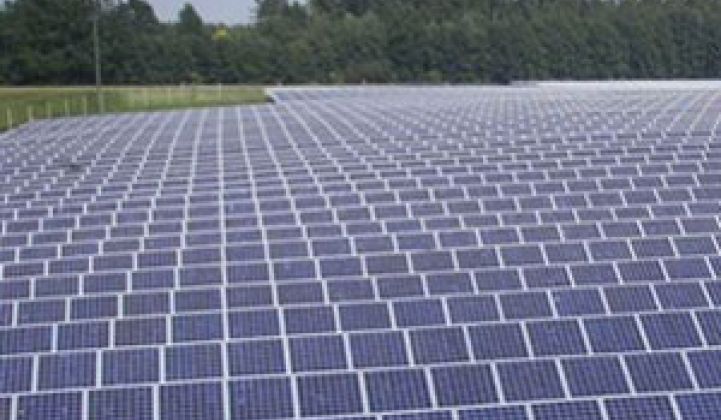Companies seeking to take First Solar's place at the top of the thin-film solar panel market won't have an easy time of it – even if investors are hungry to find such a contender.
"Searching for the ‘Second Solar'," – the title that Photon International gave to the opening day of its three-day solar industry conference in San Francisco – made that point neatly enough.
After all, you can't have a "second solar" without a First Solar (NSDQ: FSLR) to compete against. The Tempe, Ariz.-based maker of cadmium-telluride panels has driven its production costs to as low as $1.08 per watt in the third quarter of 2008, down from $1.18 in the previous quarter and $1.23 in 2007 (see First Solar Profits Up 54%, Credit Crunch Could Impact Biz).
Getting to those low costs has been the result of more than 20 years of "hard work," as well as the alignment of First Solar's expansion at a time when solar power was receiving significant support from both governments and investors, Bruce Sohn, First Solar's president, told the conference audience Tuesday.
While many other solar panel startups are now aiming at costs of $1 per watt, "It's clearly not obvious who's going to do that, and how it's going to happen," Sohn said.
Thin-film companies including Solyndra, Nanosolar, Miasolé and HelioVolt, which make copper-indium-gallium-diselenide films, also known as CIGS, have raised a lot of money as they've set their sights on competing with First Solar (see Competition for First Solar?). So have giants like Honda and Shell.
Potentially, CIGS panels can harvest more electricity from the sun than cad tel panels. Experimental CIGS panels at NREL hit 19.9 percent efficiency while the best cal tel cells peak at around 16.5 percent efficiency.
Many also say that putting CIGS thin-film solar cells on thin substrates, like metal foils, is easier. First Solar puts its solar cells on glass, expensive to buy and heavy to ship, although it is trying to develop thin substrates.
And there are now new cad tel solar cells coming to market, such as AVA Solar, which just raised over $100 million in VC funds.
But given today's poor economic climate – and the growing maturity of First Solar's relentlessly efficient manufacturing, represented by the company's $6.3 billion current backlog of sales – startups will have a hard time trying to match First Solar's recipe in the short term, said Jeffrey Grabow, with Ernst & Young's high technology practice in San Jose.
After years of growing venture capital investment in solar companies, 2008 will probably see investments fall, Grabow said. In the short term, it's likely venture capitalists will focus on getting later-stage companies to profit-making production, rather than funding earlier-stage companies seeking to prove new technologies, he said.
"Since the end of September, times have changed," he said. "Venture capitalists are spending a lot of time rationalizing their own portfolios," seeking to separate those companies with short-term paths to profitability from those that won't survive, he said.
"Cleantech and solar have been bright spots, and I think they'll continue to get the lion's share of dollars in the near term," he said. "But I think a lot of that will be going to later-stage deals, because that's where they have to go."
The larger outfits like Honda won't have to worry about VC funding, but even these companies are having a rough ride. Shares of solar companies have fallen harder and faster than the Dow Industrial Average in the past two months, he said, and "This is going to affect anyone in the solar industry who's looking for capital or financing," Grabow said. (See Stocks Stumble After SunPower Lowers Forecast.)
Michael Ware, a managing director at Good Energies, a venture capital firm focused on greentech investments, said solar startups shouldn't "oversell themselves" when considering how to bring new technologies to market. Nor should they expect to go public with the expectation that they will match First Solar's market performance (see First Solar Shares Jump 24.5%).
"There's a long road to go from a startup to where First Solar is," he said. "To calculate your valuation based on where First Solar is, we think is a mistake."
While Good Energies will continue to look for investments in solar companies, "The new investments we're going to make are going to be very selective," he said.
Still, Grabow said, companies that do have technologies – and plans to bring them to commercialization – that could match First Solar should relentlessly network to get the attention of venture capitalists.
After all, "They're afraid they missed First Solar, and they're afraid they're going to miss ‘second solar," he said.



